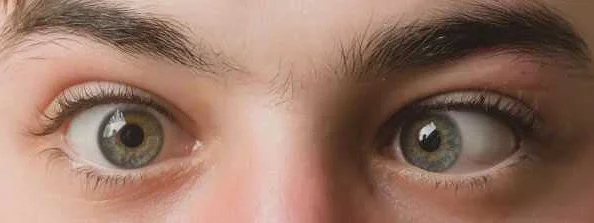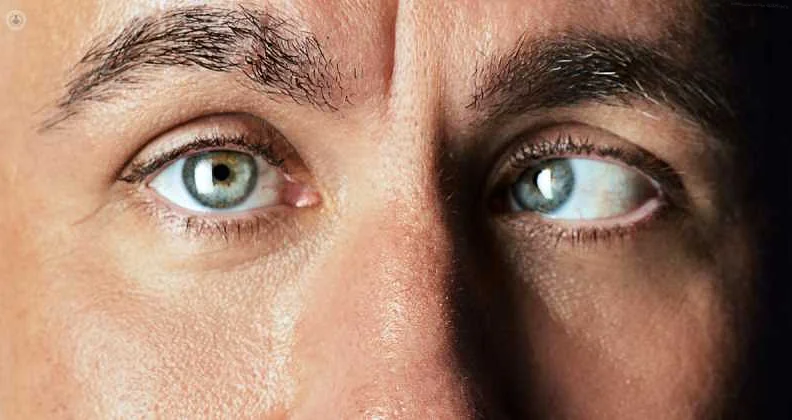Strabismus: Treatment Will Require Effort
Strabismus treatment requires effort from patients and their families. Learn about the different treatment options available and the importance of early intervention to correct this condition.
Strabismus, also known as crossed eyes or squint, is a common condition that affects the alignment of the eyes. It occurs when the eyes do not work together to focus on an object, causing one eye to turn inward, outward, upward, or downward. This misalignment can lead to a variety of symptoms, including blurred vision, double vision, and difficulty with depth perception.
While strabismus can occur at any age, it most often develops in childhood. If left untreated, it can result in permanent vision problems and even blindness in severe cases. Fortunately, effective treatment options are available to correct strabismus and restore proper eye alignment.
Treating strabismus requires dedication from both the patient and their caregivers. It often involves a combination of eye exercises, the use of corrective lenses, and in some cases, surgery. The goal of treatment is to strengthen the vision in the weaker eye and encourage the eyes to work together as a team.
Eye exercises play a crucial role in strabismus treatment. These exercises are designed to improve the coordination and control of the eye muscles. They may involve focusing on a specific target, tracking objects with the eyes, or using special glasses or prisms. Performing these exercises regularly and correctly is essential for optimal results.
Corrective lenses, such as glasses or contact lenses, are often prescribed to correct any refractive errors that may contribute to strabismus. These lenses help to improve vision and reduce strain on the eyes. They may be used in conjunction with eye exercises or as a standalone treatment, depending on the severity of the condition.
In cases where non-surgical methods are not effective or appropriate, surgery may be recommended. Strabismus surgery aims to correct the alignment of the eyes by adjusting the position of the eye muscles. It is typically performed under anesthesia and may require a short stay in the hospital. While surgery is considered a safe and effective treatment option, it is often used as a last resort when other methods have failed.
Understanding Strabismus: Causes and Symptoms

Strabismus, commonly known as crossed or wandering eyes, is a condition in which the eyes do not align properly. Instead of working together, one or both eyes may point in different directions. This misalignment can occur constantly or intermittently.
There are several potential causes of strabismus. One common cause is a muscle imbalance in the eye, which can disrupt the eye’s ability to move and focus properly. This muscle imbalance may be present from birth or can develop later in life due to factors such as trauma or certain medical conditions.
A family history of strabismus can also increase the likelihood of developing the condition. If one or both parents have strabismus, their children may be more prone to developing it as well.
Symptoms of strabismus may vary depending on the severity of the condition. The most obvious symptom is the misalignment of the eyes, which can be easily noticeable. Other symptoms may include:
- Double vision
- Poor depth perception
- Squinting or closing one eye
- Eyestrain or fatigue
- Headaches
If left untreated, strabismus can lead to further problems, including amblyopia (lazy eye) and decreased visual acuity in the misaligned eye. Early diagnosis and treatment are essential to prevent these complications and improve overall eye health.
Diagnosis and Evaluation: Essential Steps for Effective Treatment
Diagnosing and evaluating strabismus is a crucial step in ensuring effective treatment. This process involves a comprehensive examination of the patient’s eyes and visual function, as well as a thorough assessment of their medical history.
One of the primary tools used in the diagnosis of strabismus is the ocular motility examination. This test evaluates the ability of the eyes to move and coordinate properly. It helps determine the type and severity of strabismus, as well as any associated symptoms or underlying conditions.
In addition to the ocular motility examination, other diagnostic tests may be performed, including a visual acuity test, which measures the sharpness of the patient’s vision, and a refraction test, which determines the need for corrective lenses.
It is also important to evaluate the patient’s medical history, as certain factors can contribute to the development or progression of strabismus. This includes assessing any previous eye injuries, surgeries, or illnesses, as well as any family history of strabismus or other eye conditions.
Once the diagnosis has been made and the patient’s strabismus has been evaluated, a treatment plan can be developed. This plan may include a combination of interventions, such as glasses or contact lenses, eye exercises, or surgical correction.
In conclusion, the diagnosis and evaluation of strabismus are essential steps in the effective treatment of this condition. By understanding the patient’s unique circumstances and conducting thorough examinations, healthcare professionals can develop personalized treatment plans that address the underlying causes of strabismus and improve the patient’s visual function and quality of life.
Treatment Options: From Eye Exercises to Surgical Interventions

Treating strabismus requires a combination of dedication and patience. There are various treatment options available, ranging from non-invasive eye exercises to surgical interventions.
Eye exercises: This is often the first line of treatment for strabismus. Eye exercises are designed to strengthen the eye muscles and improve coordination between the eyes. These exercises may include focusing on specific objects, tracking moving objects, or using special tools such as prism glasses. Eye exercises need to be performed regularly and under the guidance of a specialist.
Orthoptic therapy: Orthoptic therapy is a type of eye exercise program that focuses on improving eye coordination. It involves a series of exercises and techniques aimed at training the eyes to work together. This therapy is typically conducted by a trained orthoptist and can be beneficial for both children and adults with strabismus.
Patching: Patching is a common treatment option for children with amblyopia, a condition often associated with strabismus. This involves covering the stronger eye with a patch to force the weaker eye to work harder. Patching is usually done for a specific period of time each day, and the duration is determined by the severity of the condition.
Prism glasses: Prism glasses are often used as a temporary solution to correct double vision caused by strabismus. These glasses have special lenses that help redirect the light entering the eyes, allowing the brain to fuse the images from both eyes. While prism glasses can provide immediate relief, they do not address the underlying issue and may not be suitable for long-term use.
Botulinum toxin (Botox) injections: In some cases, botulinum toxin injections may be recommended to treat strabismus. This treatment involves injecting small amounts of Botox into specific eye muscles to temporarily weaken them. By weakening certain muscles, the balance of the eye muscles can be restored, helping to straighten the eyes. Botox injections are typically performed as an outpatient procedure and may need to be repeated periodically.
Surgical interventions: Surgery is often considered when non-invasive treatments have not been successful or when the strabismus is particularly severe. During strabismus surgery, the eye muscles are adjusted to improve eye alignment. This procedure is typically performed under general anesthesia and may require a short recovery period. While surgery can be effective in correcting strabismus, it may not completely eliminate the need for certain non-invasive treatments.
It is important to consult with an eye specialist to determine the most appropriate treatment options for each individual case of strabismus. Every person’s strabismus is unique, and a tailored treatment plan is necessary for the best outcomes.
The Importance of Early Intervention: Preventing Long-Term Complications

Strabismus, commonly known as crossed or misaligned eyes, is a condition that affects the alignment of the eyes. If left untreated, it can lead to a range of long-term complications that can impact a person’s vision and overall quality of life. That is why early intervention is crucial in preventing these complications.
One of the main reasons why early intervention is important is because the brain is still developing during the early years of life. When a child is born with strabismus or develops it at a young age, their brain is still adaptable and can learn to correct the misalignment. However, if the condition is left untreated, the brain may start to suppress the image from the misaligned eye, leading to a condition called amblyopia or lazy eye. Amblyopia can result in permanent vision loss in the affected eye.
Another long-term complication that can arise from untreated strabismus is the loss of binocular vision. Binocular vision refers to the ability of both eyes to work together as a team, allowing for depth perception and accurate spatial awareness. When one eye is misaligned, the brain may start to rely more on the input from the stronger eye, leading to a loss of binocular vision. This can impact a person’s ability to judge distances, navigate their environment, and even affect their performance in activities such as sports or driving.
Early intervention not only helps prevent these long-term complications, but it also allows for better treatment outcomes. The earlier strabismus is detected and treated, the more successful the outcomes are likely to be. By starting treatment early, vision therapy, corrective lenses, or in some cases, surgery can be used to correct the misalignment and restore proper eye alignment. This can greatly improve the individual’s quality of life, allowing them to see clearly and comfortably.
In conclusion, early intervention is crucial in preventing long-term complications associated with strabismus. By addressing the condition early on, it is possible to prevent vision loss, maintain binocular vision, and achieve better treatment outcomes. If you or your child is showing signs of strabismus, it is important to seek professional care as soon as possible to ensure the best possible outcome for their vision and eye health.